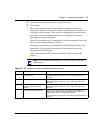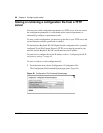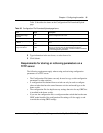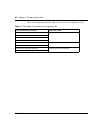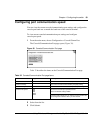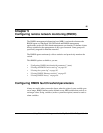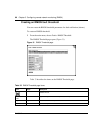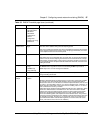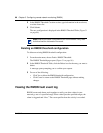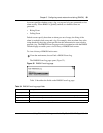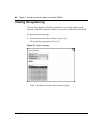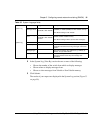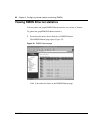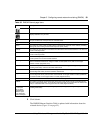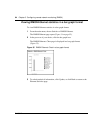
Chapter 5 Configuring remote network monitoring (RMON) 87
Using Web-based Management for the BayStack 380-24F Gigabit Switch
Parameter (1) Good-Bytes
(2) Good-Packets
(3) Multicast
(4) Broadcast
(5) CRC-Errors
(6) Runts
(7) Fragments
(8) Frame-Too-Long
(9) Collisions
Choose the sampled statistic.
Current Level Integer The value of the statistic during the last sampling period.
Note: If the sample type is Delta, the value is the difference between the samples
at the beginning and end of the period. If the sample type is Absolute, the value
is the sampled value at the end of the period.
Rising Level Integer Type the event entry to be used when a rising threshold is crossed.
Note: When the current sampled value is greater than or equal to this threshold,
and the value at the last sampling interval was less than this threshold, a single
event will be generated. After a rising event is generated, another such event is
not generated until the sampled value falls below this threshold and reaches the
Falling Threshold.
Rising Action (1) None
(2) Log
(3) SNMP Trap
(4) Log and Trap
Choose the type of notification for the event. Selecting Log generates an entry in
the RMON Event Log table for each event. Selecting SNMP Trap sends an
SNMP trap to one or more management stations.
Interval Type the time period (in seconds) to sample data and compare the data to the
rising and falling thresholds.
Sample/Alarm
Sample
(1) Absolute
(2) Delta
Choose the sampling method.
Absolute: Absolute alarms are defined on the current value of the alarm variable.
An example of an alarm defined with absolute value is card operating status.
Because this value is not cumulative, but instead represents states, such as card
up (value 1) and card down (value 2), you set it for absolute value. Therefore, an
alarm could be created with a rising value of 2 and a falling value of 1 to alert a
user to whether the card is up or down.
Delta: Most alarm variables related to Ethernet traffic are set to delta value. Delta
alarms are defined based on the difference in the value of the alarm variable
between the start of the polling period and the end of the polling period. Delta
alarms are sampled twice per polling period. For each sample, the last two
values are added together and compared to the threshold values. This process
increases precision and allows for the detection of threshold crossings that span
the sampling boundary. Therefore, if you keep track of the current values of a
given delta-valued alarm and add them together, the result is twice the actual
value. (This result is not an error in the software.)
Table 33 RMON Threshold page items (continued)
Item Range Description



